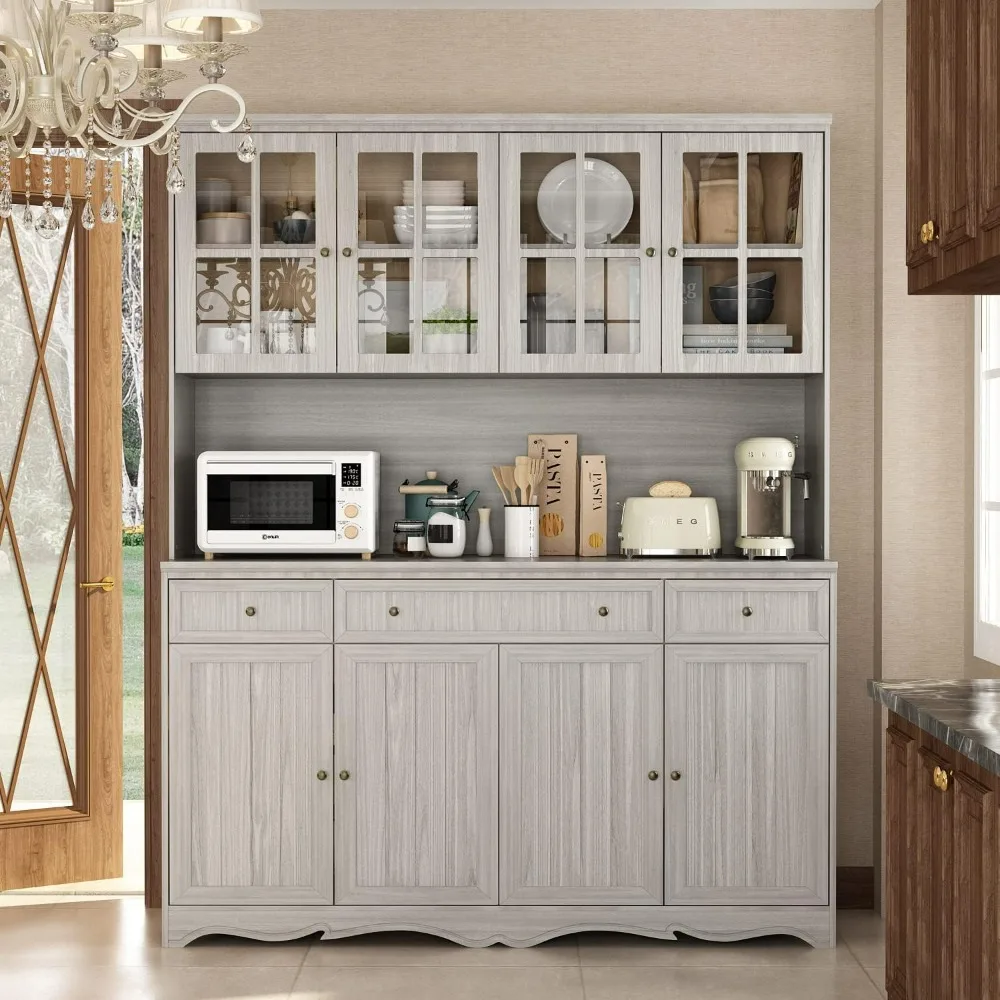 Introduction:
Introduction:
Removing kitchen cabinets can be a necessary step during renovation or remodeling projects. Whether you are replacing the cabinets or making changes to the layout, knowing how to properly remove them is essential. In this comprehensive guide, we will provide you with a step-by-step process for removing kitchen cabinets. By following these simple instructions, you can successfully remove your cabinets and prepare your kitchen for the next phase of your project.
 Preparation
Preparation
Clear the Area:
Remove all items from the cabinets, including dishes, cookware, and food.
Clear the countertops and surrounding area to create a safe and clutter-free work environment.
Turn Off Utilities:
Prior to removing any cabinets near water or gas lines, turn off the utilities at the main source.
This ensures your safety and prevents any potential accidents.
Detaching Doors and Drawers
Remove Cabinet Doors:
Open the cabinet doors and locate the hinges.
Unscrew the hinges from the cabinet frame using a screwdriver or drill.
Lift the doors off the hinges and set them aside.
Take Out Drawers:
Fully extend the drawers and locate the release mechanism or stopper.
Depress the release mechanism or remove the stopper to disconnect the drawer from its tracks.
Slowly pull the drawer out, making sure to support its weight.
 Disconnecting Countertops
Disconnecting Countertops
Loosen Countertop Attachments:
Locate any screws or brackets securing the countertop to the cabinets.
Carefully unscrew or remove these attachments using a screwdriver or drill.
Disconnect the Countertop:
With the attachments removed, gently lift the countertop to detach it from the cabinets.
If the countertop is glued or caulked, use a putty knife to carefully separate it from the cabinet surface.
Removing Upper Cabinets
Locate Wall Studs:
Use a stud finder to locate the wall studs behind the upper cabinets.
Mark the stud locations with a pencil to ensure a secure and stable removal process.
Unscrew Cabinet from Wall:
Starting with the top cabinet, locate the screws attaching it to the wall.
Use a screwdriver or drill to remove these screws, taking care to support the cabinet’s weight as you loosen them.
Once the screws are removed, gently pull the cabinet away from the wall and set it aside.
Repeat for Additional Upper Cabinets:
Follow the same process for each upper cabinet, working from top to bottom.
Take your time and ensure that all screws are removed before gently pulling the cabinet away from the wall.
 Removing Base Cabinets
Removing Base Cabinets
Remove Base Cabinet Countertop:
If the base cabinets have a separate countertop, follow the steps in Section 3 to disconnect and remove it.
Disconnect Base Cabinets from Each Other:
Locate any screws or brackets that connect the base cabinets together.
Remove these attachments to separate the cabinets, using a screwdriver or drill.
Unscrew Base Cabinets from Wall:
Starting with the top base cabinet, locate the screws attaching it to the wall.
Use a screwdriver or drill to remove these screws, ensuring that the cabinet is supported as you loosen them.
Once the screws are removed, gently pull the cabinet away from the wall and set it aside.
Repeat for Additional Base Cabinets:
Follow the same process for each base cabinet, working from top to bottom.
Take your time to remove all screws before gently pulling the cabinet away from the wall.
Clean Up and Patching
Clean the Area:
Remove any remaining debris or dust from the removed cabinets.
Wipe down the surrounding walls and surfaces to prepare them for the next phase of your project.
Patch Holes and Repair Damage:
Inspect the walls for any holes or damage left behind by the removed cabinets.
Use spackle or putty to fill in these holes, and sand the patched areas until smooth.
In addition, in order to avoid unnecessary disassembly, when choosing cabinets, pay attention to
To choose kitchen cabinets that complement your kitchen design, consider the following factors:
Design style:
Determine the design style of your kitchen, such as traditional, modern, farmhouse, or transitional. Choose cabinets that align with this style. For example, raised panel or glass-front cabinets are popular in traditional kitchens, while sleek, flat-panel cabinets are common in modern designs.
Color scheme:
Take into account the overall color scheme of your kitchen. Cabinets can either blend in with the color palette or stand out as a focal point. Consider options like white or neutral cabinets for a clean and timeless look, or bold-colored cabinets for a statement-making design.
Material and finish:
Consider the materials and finishes that best suit your kitchen design and desired level of durability. Wood cabinets, like oak or cherry, offer warmth and natural beauty. Alternatively, laminate or thermofoil cabinets provide a cost-effective and low-maintenance option. Choose a finish that complements other elements in the kitchen, such as countertops and flooring.
Cabinet door style:
Select cabinet door styles that enhance the overall design aesthetic. Options include raised panel, recessed panel, shaker, slab, or glass-front doors. Ensure the chosen style suits your design style and complements other elements in the kitchen, such as appliances and backsplash.
Hardware:
Consider the hardware, such as knobs and pulls, that will be used on the cabinets. Choose hardware that matches the style of the cabinets and overall design. For instance, sleek and minimalist hardware complements a modern kitchen, while ornate and detailed hardware may be more suitable for a traditional design.
Functionality and storage needs:
Evaluate your storage needs and preferences to determine the cabinet layout and storage options. Consider features like pull-out shelves, deep drawers, or built-in organizers to maximize storage efficiency and functionality.
Budget:
Set a budget and choose cabinets that fit within your financial constraints. There is a wide range of cabinet options available at different price points, so ensure you balance your desired design aesthetics with your budget limitations.
Remember to consider the overall cohesion and harmony of the kitchen design when selecting cabinets. It can be helpful to consult with a kitchen designer or professional to ensure the chosen cabinets complement the overall style and functionality of your kitchen.
 Conclusion:
Conclusion:
Knowing how to remove kitchen cabinets is a valuable skill for any homeowner undertaking a renovation or remodeling project. By following these step-by-step instructions, you can safely and efficiently remove your kitchen cabinets and prepare the space for the next phase of your project. Remember to take your time, exercise caution, and follow safety guidelines throughout the process.


